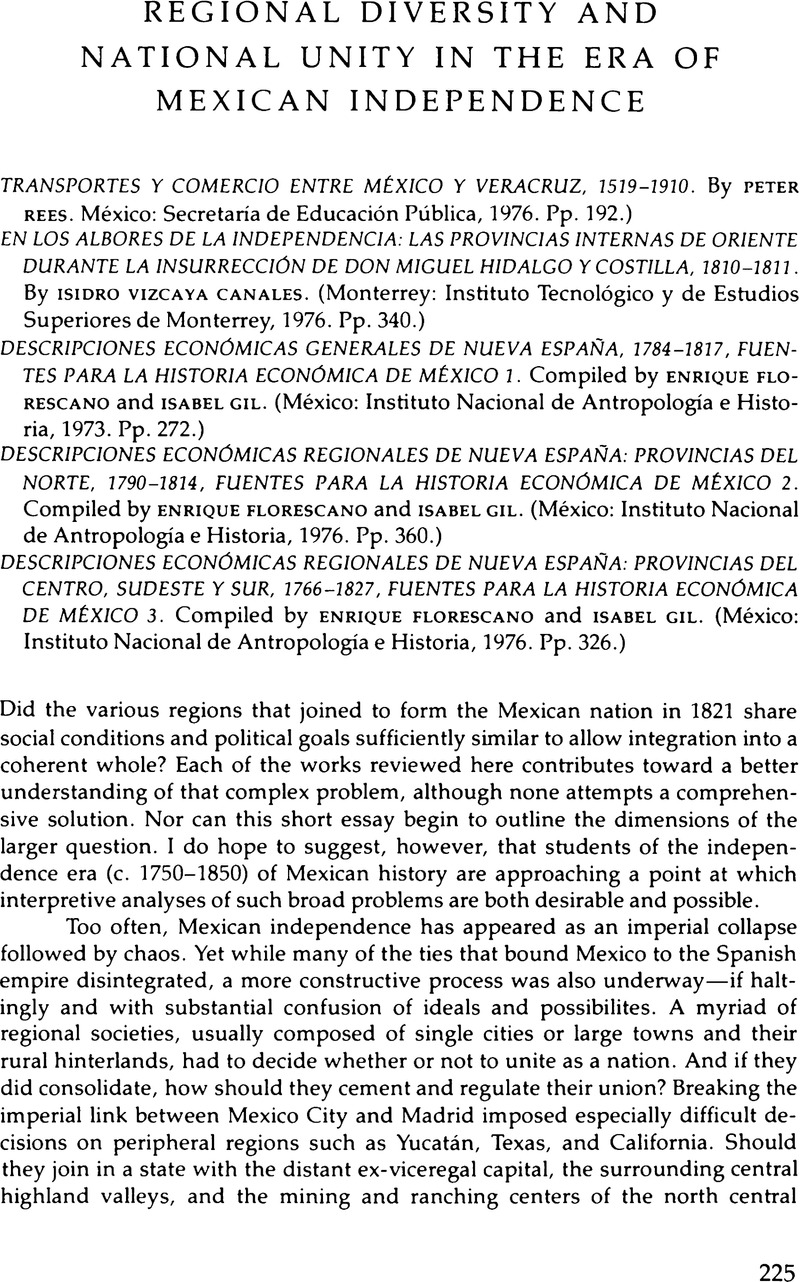Published online by Cambridge University Press: 24 October 2022

1. The monuments of this period are Silvio Zavala, La encomienda indiana (Madrid: Centro de Estudios Históricos, 1935), and François Chevalier, La formation des grands domaines au Mexique: Terre et société aux XVIe–XVIIe siècles (Paris: Institut d'Ethnologie, 1952).
2. The shift to regional studies perhaps dates from the appearance of Charles Gibson, Tlaxcala in the Sixteenth Century (New Haven: Yale University Press, 1952) and surely attained its high point with Gibson's The Aztecs under Spanish Rule (Stanford: Stanford University Press, 1964). The Berkeley demographers' work appeared in numerous volumes of the Ibero Americana series and culminated in Sherburne F. Cook and Woodrow Borah, Essays in Population History, 2 vols. (Berkeley: University of California Press, 1971, 1974).
3. The recent volume edited by Ida Altman and James Lockhart, Provinces of Early Mexico (Los Angeles: UCLA Latin American Center, 1976), aims to bridge the gap between regional and comprehensive studies. Enrique Semo's Historia del capitalismo en México: Los orígenes, 1521–1763 (México: Ediciones Era, 1973) aims to synthesize colonial developments and should stimulate others to follow his lead—perhaps by reacting against his conclusions.
4. For example, Hugh Hamill, Jr., The Hidalgo Revolt (Gainesville: University of Florida Press, 1966) and Charles H. Harris, III, A Mexican Family Empire: The Latifundio of the Sánchez Navarro Family, 1765–1867 (Austin: University of Texas Press, 1975).
5. See, Romeo Flores Caballero, La contrarevolución en la independencia (México: El Colegio de México, 1969); Javier Ocampo, Las ideas de un día (México: El Colegio de México, 1969); and Doris Ladd, The Mexican Nobility at Independence, 1780–1826 (Austin: University of Texas Institute of Latin American Studies, 1976).
6. (Cambridge: Cambridge University Press, 1971).
7. (Cambridge: Cambridge University Press, 1971).
8. La diputación provincial y el federalismo mexicano (México: El Colegio de México, 1955).
9. (México: El Colegio de México, 1972).